- Remittance
- Exchange Rate
- Stock
- Events
- EasyCard
- More
- Download
From the strong Q3 financial report to Blackwell's boost, can NVIDIA use AI to usher in a new era of
NVIDIA has performed well in recent years, especially in the fields of data center and AI technology. In 2023 and 2024, the company has become the focus of technology investors with strong revenue growth and market share expansion. With the upcoming release of the new generation Blackwell GPU, NVIDIA’s future growth potential cannot be ignored. The market expects Blackwell to further expand its data center business and consolidate its core position in AI infrastructure.
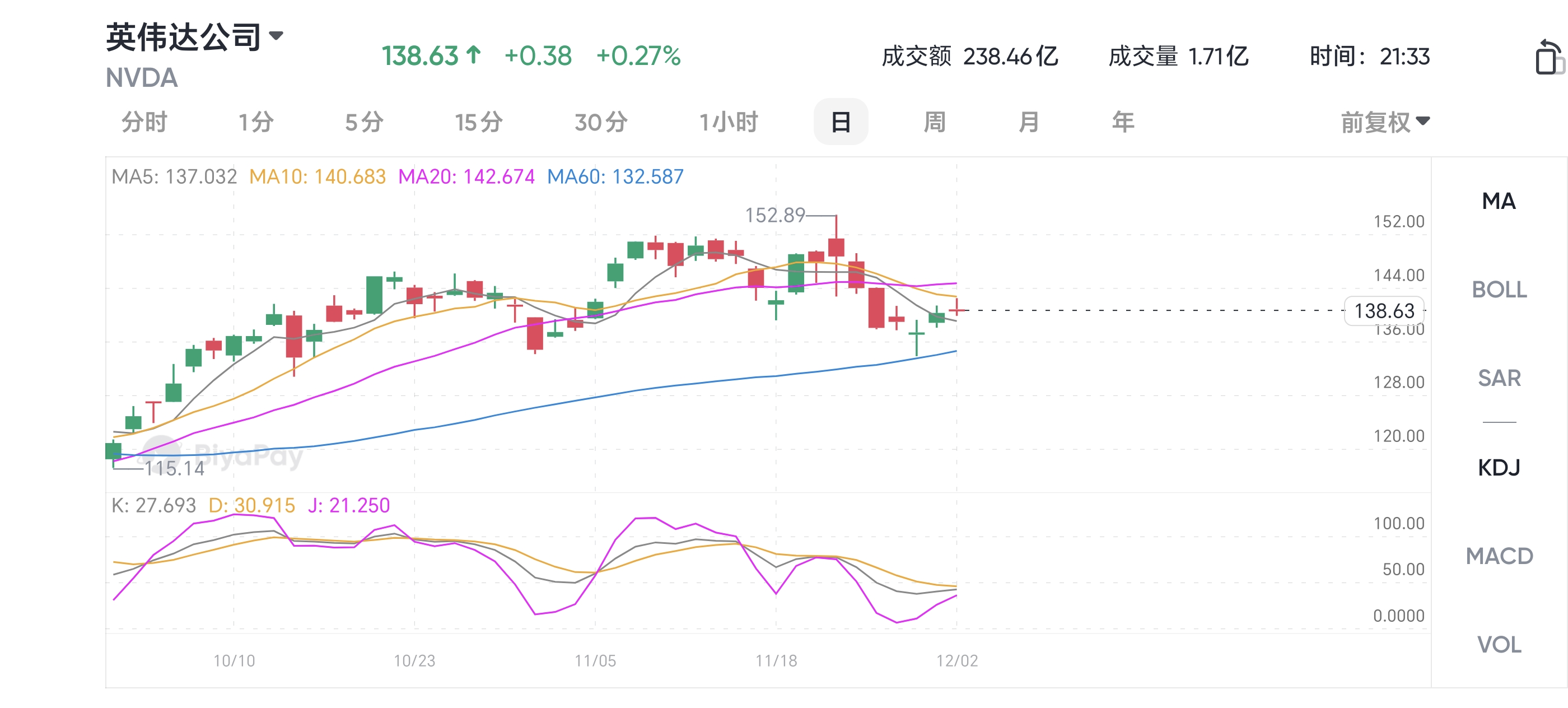
2025 may be another milestone year for NVIDIA. With the surge in demand for AI and data centers, NVIDIA is expected to usher in a new wave of growth. Next, let’s take a detailed look at what long-term growth drivers NVIDIA has.
Q3 Performance Highlights: The Drivers Behind Strong Growth
NVIDIA’s Q3 earnings report was impressive, exceeding market expectations and once again proving its strong growth momentum in the AI and Data center fields. The company’s total revenue increased by nearly 94% year-on-year to $35.08 billion, which not only exceeded analysts’ expectations but also indicated that NVIDIA’s leadership position in the market is becoming more solid.
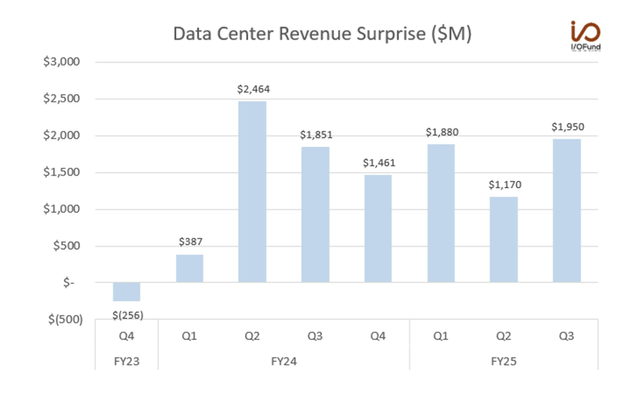
It is worth mentioning the strong performance of the Data center business. Data center revenue exceeded $30 billion, a year-on-year increase of 112%, becoming the main driving force for the company’s total revenue. With the rapid growth of Cloud Service and AI application demand, NVIDIA’s Data center products continue to expand their share in the global market. The launch of Hopper GPU marks another innovation for NVIDIA in the field of AI computing. Due to the excellent performance of Hopper GPU in processing large-scale data, it has received strong demand from Cloud as a Service provider and large-scale enterprises, driving further revenue growth.
In addition, NVIDIA’s performance in the gaming and professional visualization fields has steadily increased. Although data center has become the core of growth, other business areas still maintain good growth momentum. The stability of these businesses provides strong support for the company’s overall performance and also demonstrates the advantages of NVIDIA’s diversified business.
Through this quarter’s financial report, NVIDIA not only successfully delivered impressive results, but also once again proved its core position in the global AI technology revolution. In the future, with the further growth of data center demand and the launch of a new generation of GPUs, NVIDIA’s performance is expected to continue to maintain strong momentum.
Blackwell: A key catalyst for growth in 2025
In the future, NVIDIA’s growth will further rely on the launch of the new generation GPU - Blackwell. As the successor to Hopper GPU, Blackwell is expected to not only make breakthroughs in technology, but also become the core driving force for the company’s continued growth.
Black Gold Mine: Blackwell’s Market Potential
Blackwell is expected to enter the market on a large scale in 2025, and the launch of this new product is seen as a key factor for NVIDIA to embrace the next wave of growth. According to market analysis, Blackwell is expected to surpass Hopper’s sales and is expected to bring more than $210 billion in revenue to NVIDIA. This expected number reflects Blackwell’s huge potential in AI computing and data center fields, especially in the context of accelerating global investment in AI infrastructure. With the continuous advancement of digital transformation, Blackwell will become a key tool for major enterprises and Cloud as a Service provider to accelerate AI applications.
In particular, large technology companies such as Microsoft, Google, and Meta have begun to increase their procurement of Blackwell to meet the growing demand for AI computing. The demand from these tech giants has provided strong order support for NVIDIA and laid a solid foundation for the company’s growth in the coming years. As more and more enterprises apply AI technology to practical scenarios, the demand for high-performance GPUs will continue to increase, further promoting Blackwell’s market penetration and consolidating NVIDIA’s leadership position in the global AI ecosystem.
Balance between short-term profit fluctuations and long-term growth
Despite the anticipated launch of Blackwell, the short-term profit pressure faced by Nvidia cannot be ignored. In the third quarter, Nvidia’s gross profit margin and operating profit margin decreased, and it is expected to decrease by about 2 percentage points quarter-on-quarter in the fourth quarter. This is mainly due to the early stages of new products, which are usually accompanied by high research and development and production costs. Nevertheless, Nvidia’s management has clearly stated that with the increase of Blackwell’s production capacity, the gross profit margin will return to a high level of around 75%. Chief Financial Officer Colette Kress pointed out: “When Blackwell’s production capacity is fully increased, we expect the gross profit margin to return to the mid-range of 75%.”
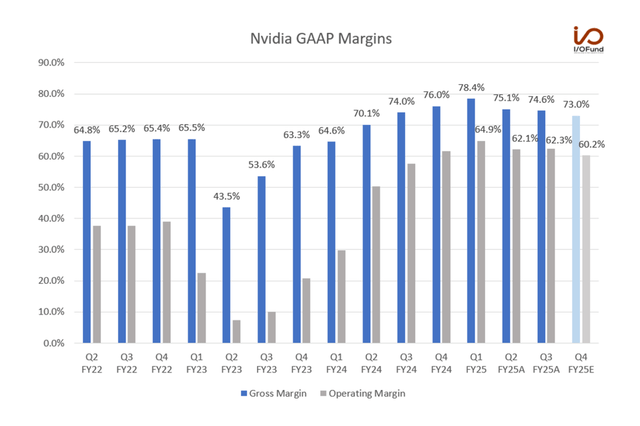
This phenomenon is not uncommon in the semiconductor industry, especially for leading companies like Nvidia, which often face short-term profit pressure when launching new generation GPUs. Investors should not ignore the company’s long-term potential because of this. In fact, Nvidia’s operating profit margin exceeds 60%, far higher than other companies in the same industry. Even if the gross profit margin fluctuates in the short term, this does not change the company’s market leadership position in the AI field.
Dual-wheel drive of technological breakthroughs and market demand
The release of Blackwell is not just a technological update, it will further promote Nvidia’s continuous innovation in the AI and data center fields. With its advanced architecture and powerful processing capabilities, Blackwell will help Nvidia maintain its leading position in fierce market competition in the coming years and ensure that the company’s core role in the global AI ecosystem is not shaken. With the continuous increase in AI computing demand, Nvidia will be able to leverage Blackwell’s powerful performance to continue to consolidate its dominant position in the high-end GPU market.
For investors, despite the risk of gross margin fluctuations in the short term, Blackwell’s strong market potential and long-term growth expectations will undoubtedly become the core driving force behind Nvidia’s stock price increase.
With the large-scale rollout of Blackwell in 2025, NVIDIA’s market share is expected to continue to expand, driving steady revenue and profit growth. Investors can seize this important growth opportunity.
BiyaPay’s multi-asset wallet provides efficient and secure deposit and withdrawal services, supporting transactions of US and Hong Kong stocks and digital currencies. Through BiyaPay, investors can quickly recharge digital currencies, exchange them for US dollars or Hong Kong dollars, and then withdraw the funds to their personal bank accounts for convenient investment. With advantages such as fast arrival speed and unlimited transfer limits, it can help investors seize market opportunities in a timely manner at critical moments, ensuring fund safety and liquidity needs.
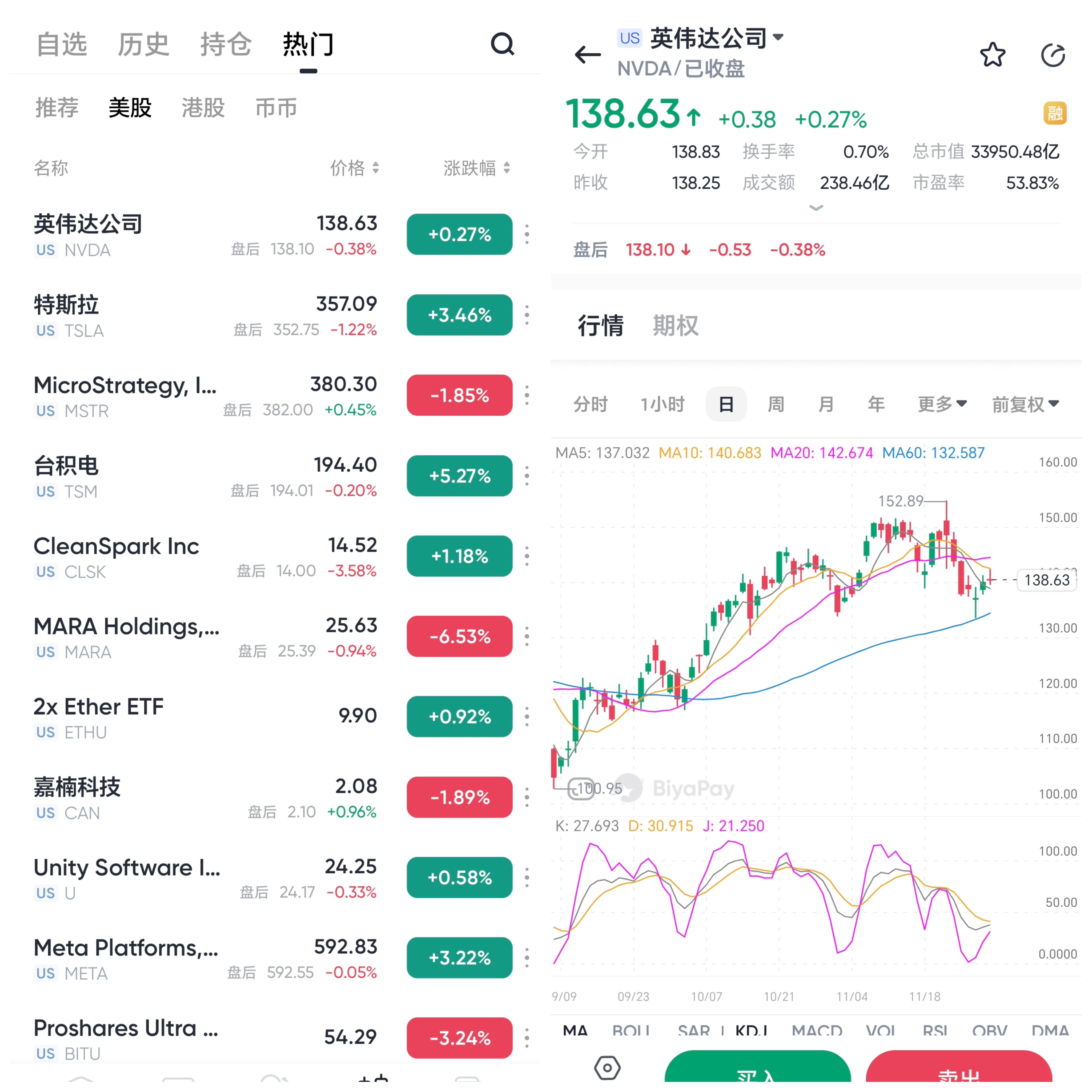
Long-term growth drivers: the explosion of AI technology and capital expenditures
With the rapid development of AI technology, NVIDIA’s growth potential is not only dependent on the launch of the new generation GPU, but also driven by global capital expenditures. Especially starting from 2024, major global tech giants have increased their investment in the AI field. This trend will accelerate in 2025 and become an important factor driving NVIDIA’s performance growth.
Large technology companies such as Amazon, Microsoft, and Meta have clearly stated that they will significantly increase their capital expenditures on AI technology. According to the latest market forecast, global capital expenditures in the AI field will exceed $270 billion by 2025, with a large portion of the funds flowing towards the procurement of data centers and GPUs. As a leading global AI chip supplier, NVIDIA will benefit greatly from this wave of capital expenditures. Whether it is for high-performance computing needs for training AI models or for AI applications pushed to the market, NVIDIA’s GPUs will become the preferred solution for these giants.
Especially in the field of data center, NVIDIA has firmly grasped the market dominance. According to the third quarter financial report, the proportion of data center revenue to the company’s total revenue continues to rise, becoming the main source of revenue. NVIDIA not only has a deep technical accumulation in the traditional data processing field, but its innovation in AI computing also makes its products unique in the market. In the next few years, with the popularization of AI applications, especially in industries such as autonomous driving, intelligent manufacturing, and medical health, NVIDIA’s GPU demand will continue to grow.
In addition, the explosion of AI technology will also drive the digital transformation of other industries, which will further stimulate the demand for high-performance computing hardware. Whether in public Cloud as a Service, EdgeComputing, or the more challenging high-performance computing field, NVIDIA’s technological advantages will continue to be widely favored and become an important engine for the company’s long-term growth. By continuously promoting technological innovation and expanding product arrays, NVIDIA will continue to consolidate its leadership position in the AI chip market in the coming years, ensuring its long-term market share.
This long-term growth momentum is not only limited to NVIDIA itself, but also an inevitable trend for the global technology industry to move forward. The explosion of AI technology, the surge in capital expenditures, and the continuous optimization of industrial structure will all interact with each other to jointly promote NVIDIA to embrace a brighter future.
Risk factors: challenges and uncertainties
Although NVIDIA has shown great growth potential with its technological leadership in AI and data center fields, investors need to carefully consider possible risks while pursuing returns. The following risks may affect the company’s future stock price performance and operational capabilities:
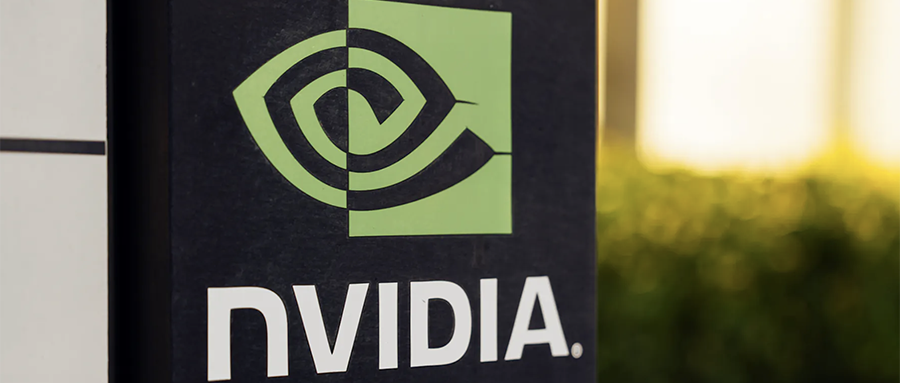
Intensified market competition
With the rapid growth of the AI and data center markets, NVIDIA is facing increasing competitive pressure. Especially in the GPU market, technology giants such as AMD are increasing their R & D investment and launching products with performance comparable to Nvidia. Although AMD’s latest GPU has not yet completely surpassed NVIDIA in technology, its growth momentum in the data center field cannot be ignored. If these competitors can achieve breakthroughs in price and technology, it may affect NVIDIA’s market share and pricing power, thereby affecting its profit margin and revenue growth.
Production and supply chain risks
The supply chain of the semiconductor industry is highly complex and relies on multi-party cooperation worldwide. Any interruption in any link may affect the delivery capability of products. The production of NVIDIA’s core products such as GPUs relies on the manufacturing capabilities of third-party foundries such as TSMC. Any production problems, raw material shortages, or natural disasters in foundries may lead to production delays or cost increases, which may affect NVIDIA’s product supply and even have a negative impact on the company’s overall performance.
Legal and regulatory risks
With NVIDIA’s rapid development in the AI field, regulatory agencies are increasingly paying attention to technology companies. Especially in areas such as data privacy, AI ethics, and Anti-Trust, NVIDIA may face legal and policy pressure from governments around the world. Recently, regions such as the US and the European Union have been increasing their regulatory efforts on technology companies, especially in terms of data protection and AI technology application standards. If NVIDIA cannot respond to new laws and regulations in a timely manner, it may face high fines or need to make business adjustments, which will affect the company’s profitability and development strategy.
The risks of technological updates and innovation
Despite the high expectations for Blackwell GPUs, any technological innovation carries the risk of failure. As a new generation GPU after Hopper, Blackwell’s market acceptance and technical performance have not yet fully demonstrated. If Blackwell fails to meet expectations in actual market applications or has technical defects, it may slow down NVIDIA’s growth pace. In addition, NVIDIA’s other technological research and development, such as the integration of AI software and hardware, may also face challenges such as technological bottlenecks or changes in market demand, thereby affecting the company’s overall competitiveness.
Although NVIDIA has advantages in many aspects, investors still need to pay attention to the above risk factors. The volatility of the stock market and the technology industry may lead to greater uncertainty in the short term. Therefore, when investing, it is recommended that investors evaluate their own risk tolerance and be fully prepared for possible challenges. However, in the long run, NVIDIA still has strong growth potential, especially its leadership position in AI and data center fields, which provides it with sustainable competitive advantages and is worth considering as an investment choice.

























